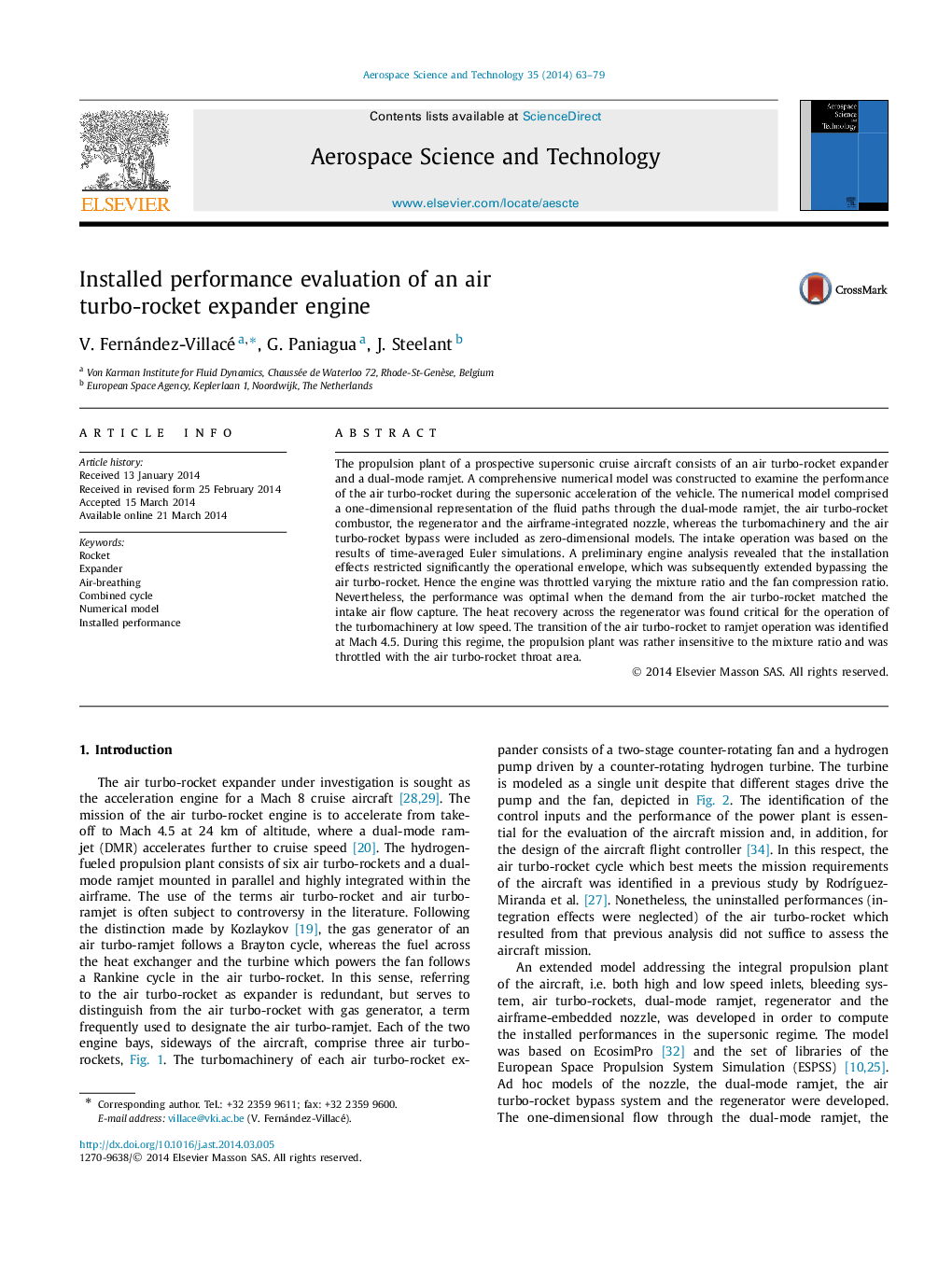| کد مقاله | کد نشریه | سال انتشار | مقاله انگلیسی | نسخه تمام متن |
|---|---|---|---|---|
| 8059043 | 1520099 | 2014 | 17 صفحه PDF | دانلود رایگان |
عنوان انگلیسی مقاله ISI
Installed performance evaluation of an air turbo-rocket expander engine
ترجمه فارسی عنوان
ارزیابی عملکرد موتور محرک توربو موشک هوا
دانلود مقاله + سفارش ترجمه
دانلود مقاله ISI انگلیسی
رایگان برای ایرانیان
کلمات کلیدی
ترجمه چکیده
نیروگاه نیروی هوایی یک هواپیمای کروز سرعتی بالغ بر یک بالگرد شامل یک توربو موشک هوا و یک موتور دوتایی است. یک مدل عددی جامع برای بررسی عملکرد توربو هوا در طی شتاب سر و صدای وسیله نقلیه ساخته شد. مدل عددی شامل نمایش یک بعدی از مسیرهای مایع از طریق رامجت دوگانه حالت، توربو شارژر توربو هوا، بازسازی کننده و نازل هواپیما یکپارچه بود، در حالی که توربو ماشینکاری و دور زدن موشک های توربو هوا به عنوان صفر مدل های چند بعدی عملیات مصرف براساس نتایج شبیه سازهای اویلر به طور میانگین زمان برآورد شد. تجزیه و تحلیل موتور اولیه نشان داد که اثرات نصب شده به طور قابل توجهی پاکت عملیاتی را محدود می کند، که پس از آن به دور زدن موشک هوا توربو گسترش یافت. از این رو، موتور نسبت به مخلوط نسبت و نسبت فشرده سازی فن تغییر می کند. با این وجود، عملکرد مطلوب بود زمانی که تقاضا از توربو هوا هوا با جذب جریان هوای ورودی مطابقت داشت. بازیابی گرما در سرتاسر بازسازی کننده برای عملکرد تورب ماشین در سرعت کم شناخته شد. انتقال ماشین هوای توربو هوا به عملیات رادیو در 4.5 ماخ. در طول این رژیم، نیروگاه نیروی محرکه نسبت به نسبت مخلوط نسبتا حساس بود و با گودال توربو هوا محاصره شده بود.
موضوعات مرتبط
مهندسی و علوم پایه
سایر رشته های مهندسی
مهندسی هوافضا
چکیده انگلیسی
The propulsion plant of a prospective supersonic cruise aircraft consists of an air turbo-rocket expander and a dual-mode ramjet. A comprehensive numerical model was constructed to examine the performance of the air turbo-rocket during the supersonic acceleration of the vehicle. The numerical model comprised a one-dimensional representation of the fluid paths through the dual-mode ramjet, the air turbo-rocket combustor, the regenerator and the airframe-integrated nozzle, whereas the turbomachinery and the air turbo-rocket bypass were included as zero-dimensional models. The intake operation was based on the results of time-averaged Euler simulations. A preliminary engine analysis revealed that the installation effects restricted significantly the operational envelope, which was subsequently extended bypassing the air turbo-rocket. Hence the engine was throttled varying the mixture ratio and the fan compression ratio. Nevertheless, the performance was optimal when the demand from the air turbo-rocket matched the intake air flow capture. The heat recovery across the regenerator was found critical for the operation of the turbomachinery at low speed. The transition of the air turbo-rocket to ramjet operation was identified at Mach 4.5. During this regime, the propulsion plant was rather insensitive to the mixture ratio and was throttled with the air turbo-rocket throat area.
ناشر
Database: Elsevier - ScienceDirect (ساینس دایرکت)
Journal: Aerospace Science and Technology - Volume 35, May 2014, Pages 63-79
Journal: Aerospace Science and Technology - Volume 35, May 2014, Pages 63-79
نویسندگان
V. Fernández-Villacé, G. Paniagua, J. Steelant,
